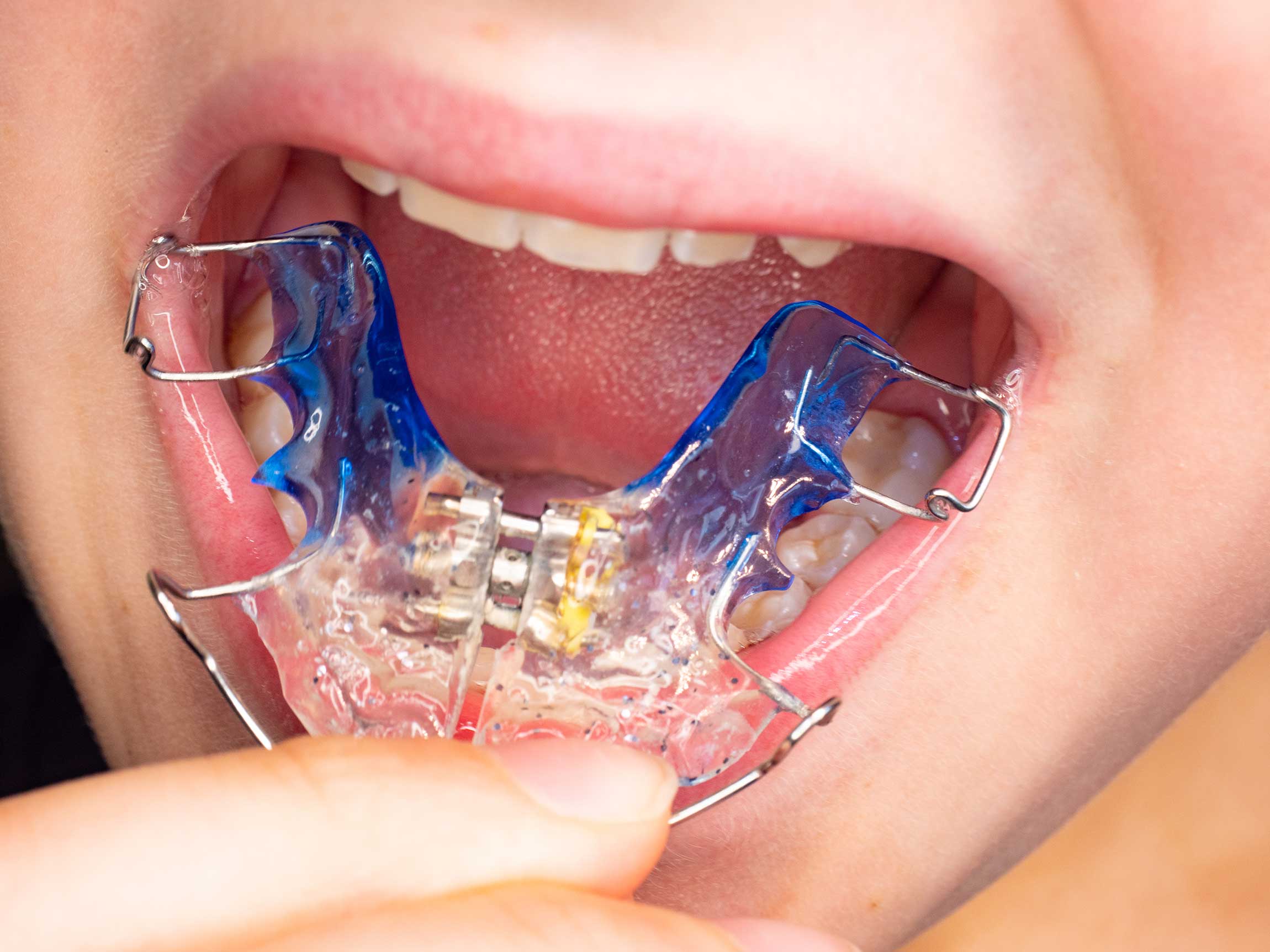Palate is used as an assistive device in orthodontic treatments. Palates, designed as both fixed and removable, are used to widen the palate in cases of palatal constriction or overlapping teeth. Palates placed on the inside of the teeth, or the upper palate, should be used for the period of time specified by the dentist. Regular check-ups should also be done to determine the progress of the treatment. These appliances are usually worn at night and must be used regularly to achieve better results than with braces.
In Which Situations Should the Palate be Used?
Palates, which are used in the final stage of orthodontic treatment, are also used to treat various oral and dental problems. The situations in which a palate should be used are as follows:
- When the upper or lower jaw is forward or backward compared to the other
- When imbalances in facial structure originate from the jaw joints
- In the expansion of jaw constrictions
- When there are abnormalities in the cusps of teeth in the upper and lower jaw bone
- When the teeth overlap
- In the elimination of crooked teeth or abnormalities in their positions
Dentists decide whether to use the palate for the treatment of the above oral and dental problems. Because using the palate may not always be an appropriate treatment for these conditions.
Palate Treatment
Dentists can decide to use palate in the treatment of various problems in the mouth and teeth. Before making this decision, a mouth and teeth examination should be performed first. During this examination, if it is determined that a palate should be used, the type of palate (fixed or removable) to be used is determined according to the disease condition. The measurement of the teeth is taken to start treatment. At this point, the design process for the palates to be worn begins.
How Long Does Palate Treatment Last?
The use of palate-type appliances lasts between 6-8 months. Improvement is achieved in 6 or 8 months if used regularly. To maintain the improvement obtained, the appliance should be used at night for 6 months.
What are the Advantages of Using Palate?
There are various advantages of using a palate for oral and dental health. These advantages are as follows:
- They are easy to clean and maintain oral hygiene.
- The biggest advantage of using palate is that they allow patients with crooked teeth be treated at a very early age. Placing orthodontic brackets on baby teeth is not meaningful. Because the baby teeth will eventually fall out and be replaced by permanent teeth. Also, there is a possibility of a second treatment being applied to permanent teeth after using brackets. Therefore, it is much more logical to use removable palates to apply force to milk teeth and control their position. This way, creating a healthy environment for the teeth coming from the bottom is possible.
- It is the most economical orthodontic treatment technique.
- It reduces the need for expensive orthodontic treatments.
- They can be made in any desired color.
- It is a short-term treatment.
- Prevent the worsening of future orthodontic problems.
- It ensures that teeth come out in the right place.
- It offers the freedom of being removable and adjustable when desired.
Who is it Applied to?
Palate treatment is an appropriate treatment method for the following individuals:
- People with anomalies in tooth arrangement
- Those with unbalanced face and jaw structure
- People with abnormalities in upper and lower jaw cavities
- Those with crooked, misplaced teeth
- People with advanced and backward jaw structure
Disadvantages of Palates
Palates can cause slight discomfort when first worn. Can cause speech difficulties and increased saliva, making swallowing hard. Limitations on hard, crunchy, acidic, and sticky foods may cause inconvenience. However, these disadvantages can be minimized by using the palate at night. Palates do not cause allergic reactions or problems with deformation.
